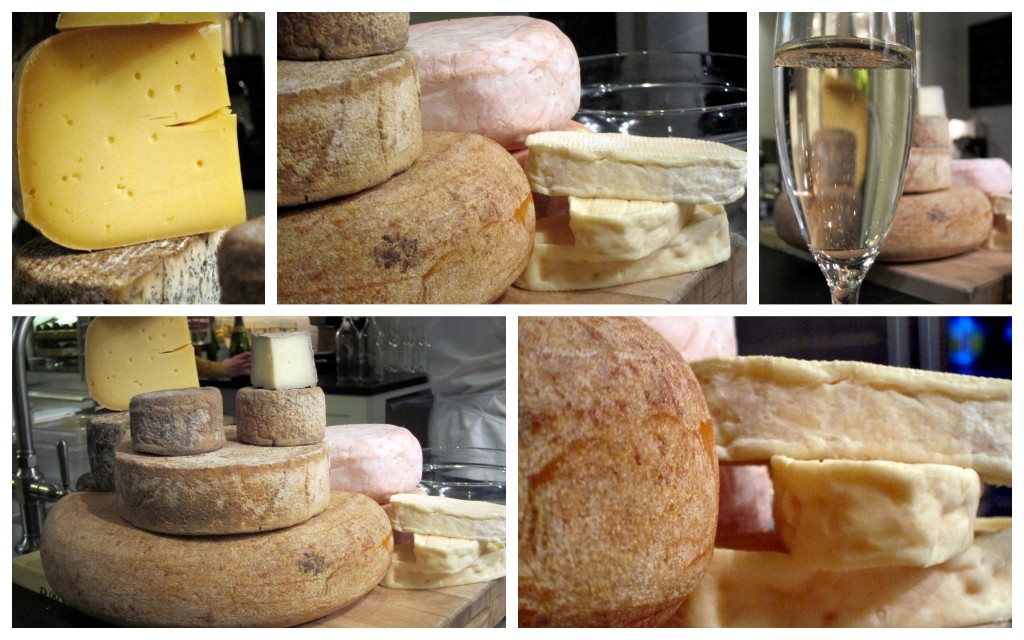
Patrick Feury, the Executive Chef/Partner of Nectar Restaurant located in Berwyn, Pa made his return to COOK with this cheese filled class on February 26, 2013. Feury sources fresh, local, natural and organic ingredients and applies them to simple French and Asian techniques at Nectar. Among Pat’s extensive culinary experience and expertise, he is certified in cheesemaking from the Vermont Institute for Artisan Cheese at the University of Vermont. Or as Lily from COOK would put it “Pat is a Cheese Genius who went to Cheese Camp.”
Pat brought with him an assortment of exquisite cheeses from Doe Run Farm, Birchrun Hills Farm, and Yellow Springs Farm all found locally in Chester County. He would incorporate cheese in all of his courses and provide a demo on how to make simple cheeses you can make at home without the need of a cheese cave!
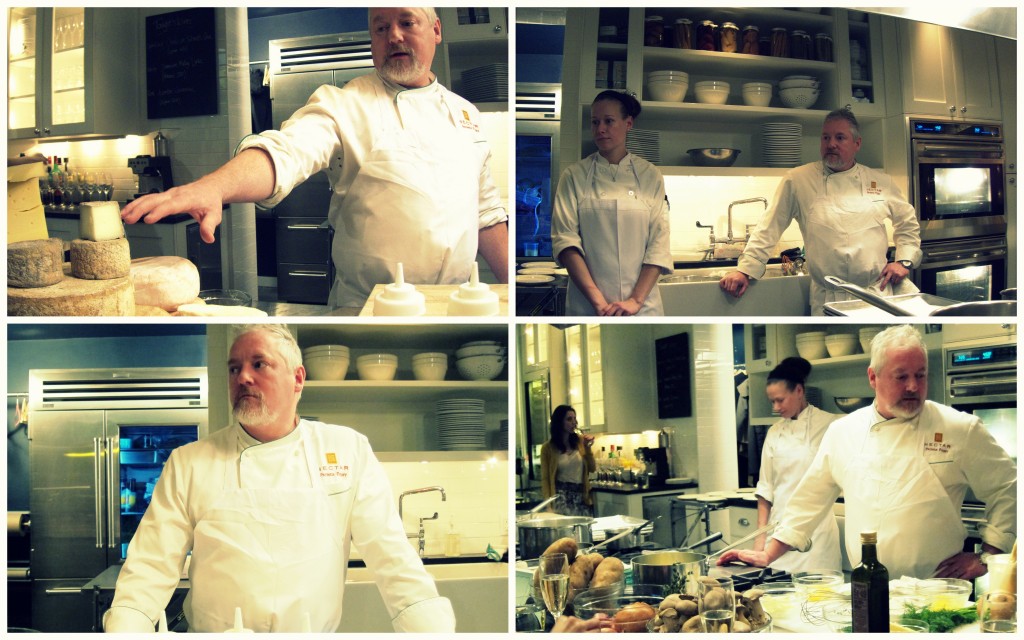
Pat helped raised sheep with his parents when he was five. His exposure to pastoral farming and aquaculture is very important to his philosophy in the kitchen at Nectar. By fourteen he was working at a butcher shop where his taste for cooking evolved and where he enrolled in the Academy of Culinary Arts in Mays Landing, New Jersey.
He would find himself starting in the kitchen of the Waldorf Astoria, NYC and trained in an ice sculpting program. Pat moved on to work with Christer Larson, a well known Scandinavian chef as his Sous Chef at Gertrude’s NYC. He left NYC for Les Olivades in Paris where he would be taught by Chef Flora Mikula to source the freshest ingredients by shopping the market at Rungis.
He then returned to New York to work for Sirio Maccioni’s four star Le Cirque 2000 as sous chef under Sottham Khunn where he would experience for the first time Asian Ingredients with French technique. Before Nectar, he most recently served as Executive Chef at Sulian Restaurant at the Borgata Hotel in Atlantic City.
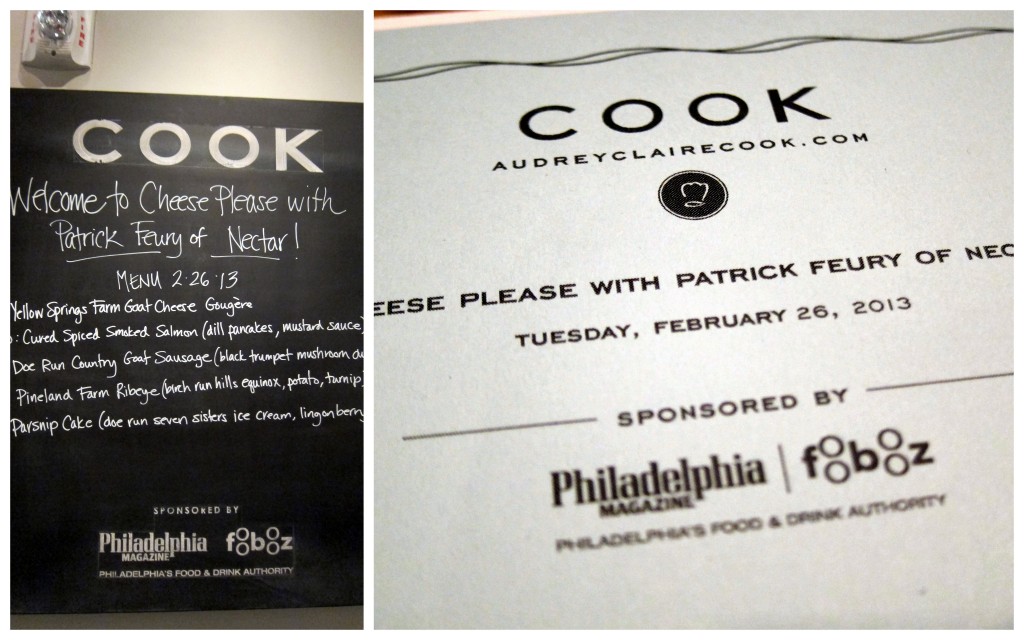
As with all COOK classes we started out with an ice breaker question: What’s your favorite cheese?
Let’s just say after hearing some of the classes answers, I need to step up my cheese game. When it came to my turn in answering the question, I went with string cheese as my favorite and got some looks and laughs. Probably because they thought I was joking… In any case, Brie was a class favorite and moved up to a bunch of fancy stuff like Ewephoria and Humboldt Fog. Surprisingly, the Whiz was not mentioned.
Pat’s current favorite cheese was found in his recent visit to Scotland, from the Isle of Mull. Mull Cheddar is considered the daddy of Scottish cheddar.
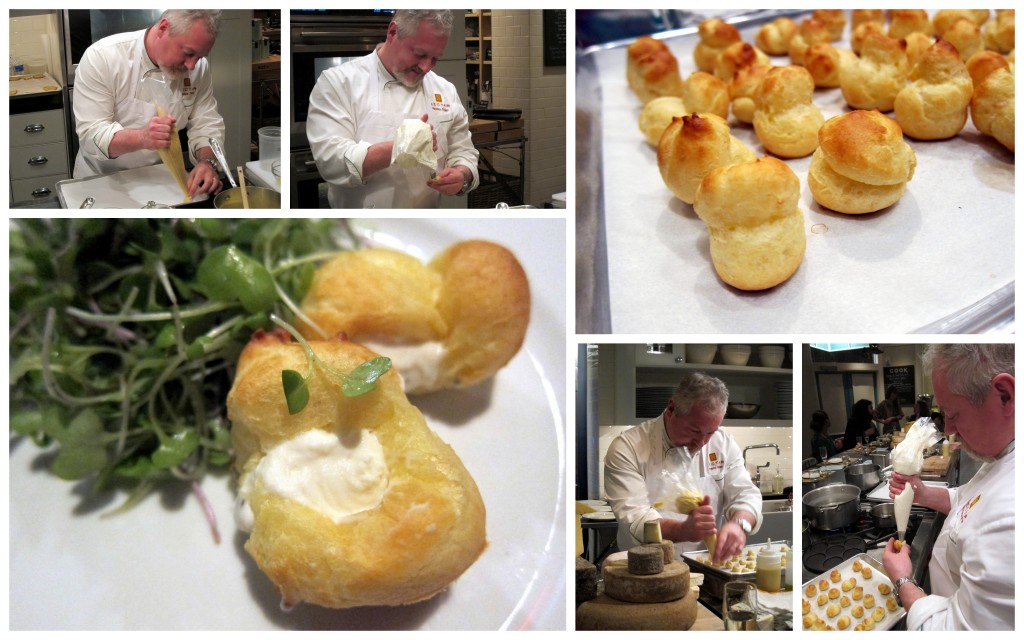
Yellow Springs Farm Goat Cheese Gougere
In addition to stepping up my cheese game, I decided I need to work on my French. Oui. I shouldn’t have skipped out on all those French language classes in middle school, because it took me a while to realize that the first course of Gougere was pretty much a French cheese puff.
For the first course Pat would start off making a choux paste for the pate a choux, which again if I knew my French I wouldn’t have written down “shoe paste” on my notes. The main ingredients to a pate a choux are water, butter, flour and eggs. Not only can they be made for gougeres, you might be familiar with them also being used in making eclairs and beignets.
Pat would use a Yellow Springs Farm Chevre a.k.a goat cheese to stuff the gougere and serve with a baby arugula salad dressed with a vinaigrette.
“If you don’t go out and buy a goat, I failed.” – Patrick Feury
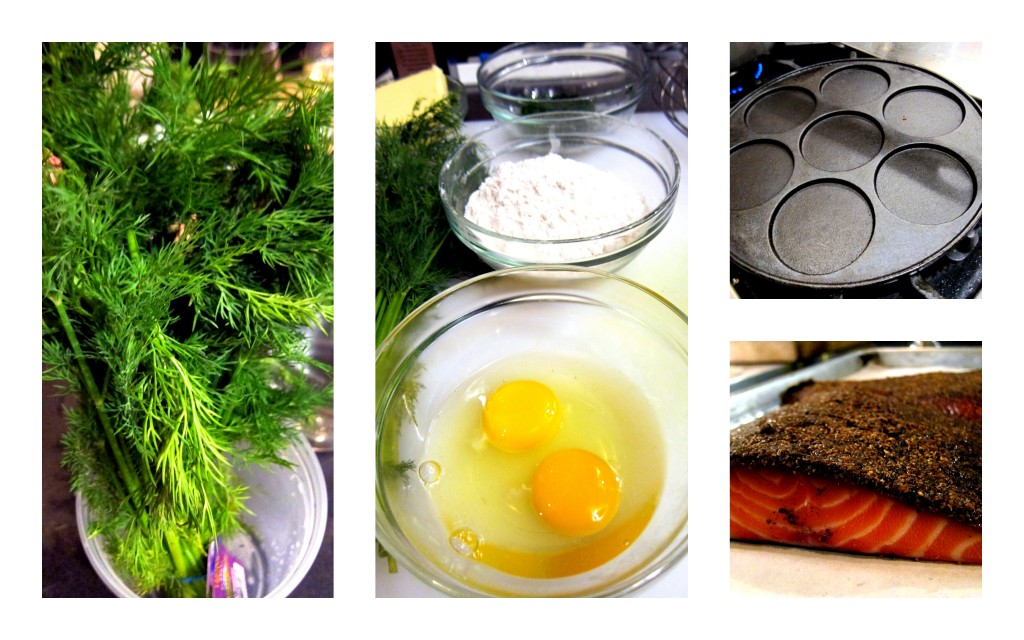
The above picture featured the ingredients necessary for preparation of the second course. Dill, eggs and flour for the dill pancakes which was made via the special pan (top right). Leave it to the Swedes to come up with a multi-pancake pan.
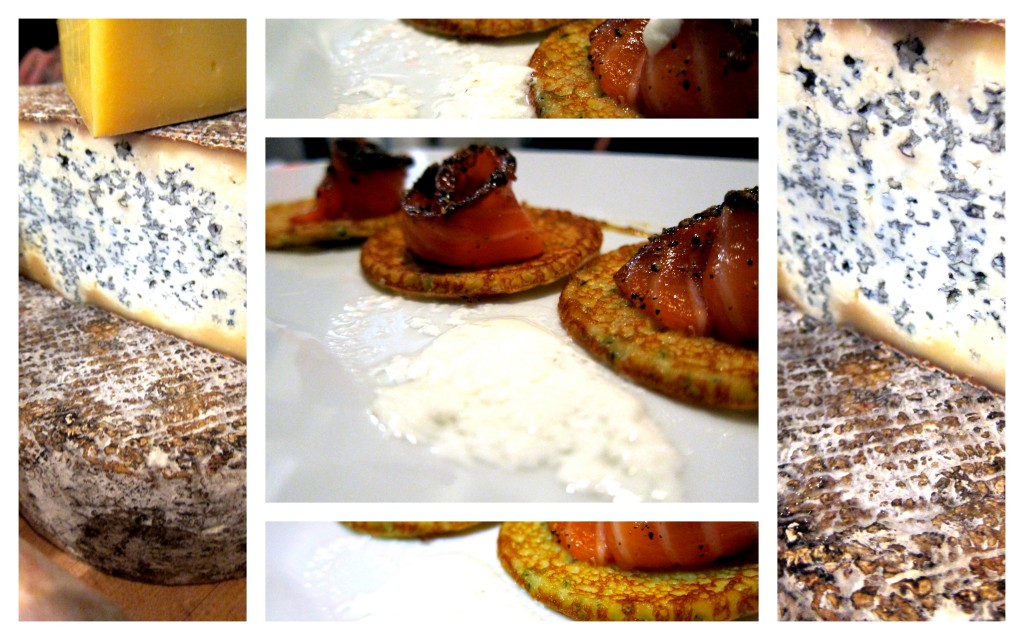
Cured Spiced Smoked Salmon
Calling on his time under Scandinavian chef, Christer Larson in New York, Pat would cure and smoke the salmon himself. This Skuna Bay Salmon from Vancouver would be cured in a mix of 50/50 salt and sugar. The salmon would sit on top a dill pancake with mustard sauce and a fresh cheese. Pat demoed how to make the fresh cheese by tempering the milk and adding rennet and some Maldon Salt. He explains more about the process which can be viewed in the video below.
When making or buying cheese, Pat feels that there isn’t really a difference in buying or making cheese with raw vs. pasteurized milk. He would caution that the most important thing in making is 1) sanitation and 2) sanitation. When making cheese from raw milk, the FDA requires that they aged for 60 days so that the acids and salts in raw-milk cheese naturally prevent listeria, salmonella, and E. coli from growing.
Pat used a beer analogy when explaining how rennet and cultures are used in the cheese making process. Consider rennet being the yeast and cultures being the hops. Where yeast is required to make the alcohol the hops would be used to impart flavor.
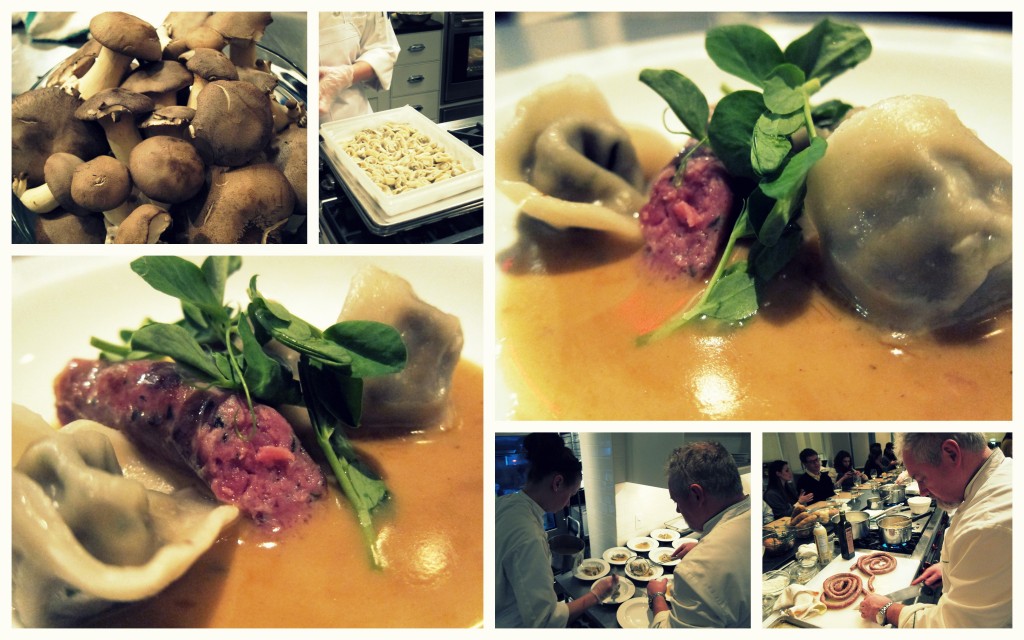
Doe Run Country Goat Sausage
Pat’s Asian techniques he utilizes at Nectar shine with this dish. He would serve a homemade sausage stuffed in lamb casing with goat sourced from Doe Run Farm. Accompanying the sausage, dumplings made with black trumpet mushrooms served with truffle sauce.
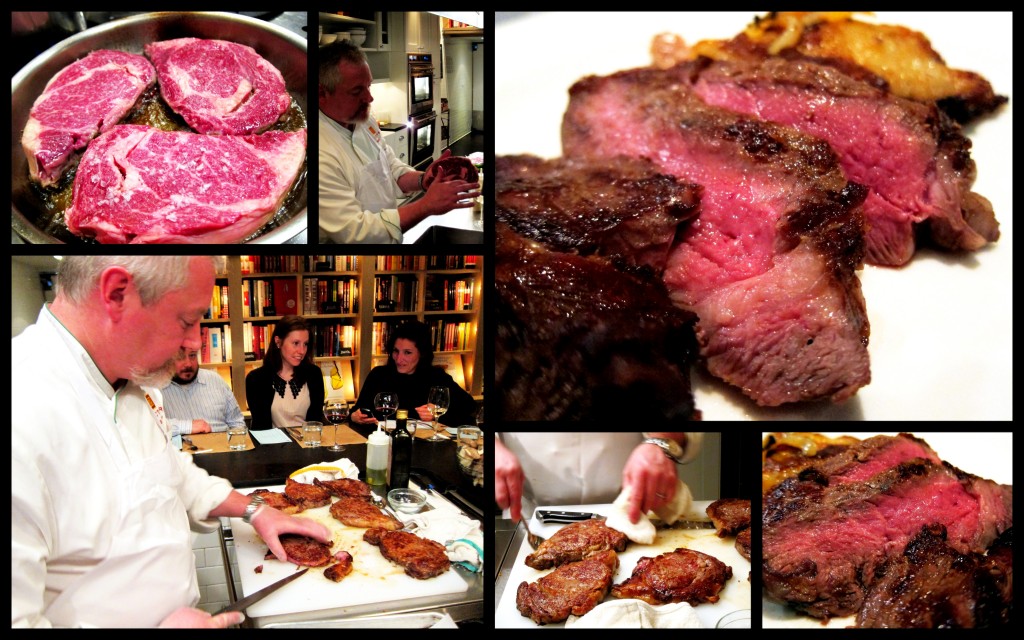
Pineland Farm Ribeye
Pat spent a week up in Maine on the farm learning about cheese, but would also find that the beef from Pineland would be what he considers one of the best meats in the country. The fourth course ribeye steak was served with a gratin made from Birchrun Hills Farm Equinox, potato, turnip and winter black truffle.
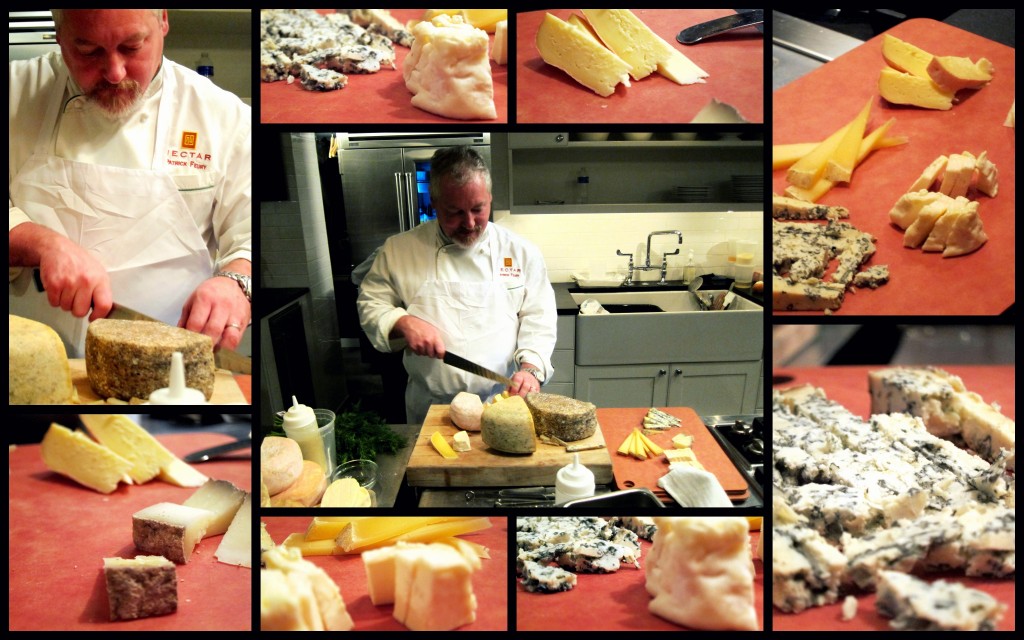
Cheese Board
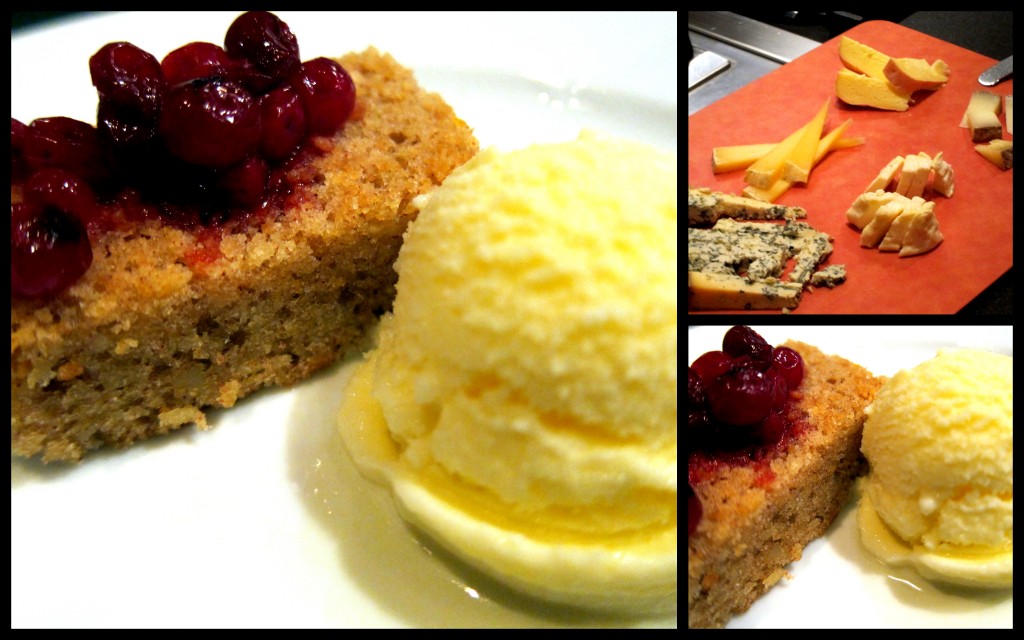
Parsnip Cake
Pat capped the night off with a parnip cake with lingonberry paired with ice cream made from Doe Run Seven Sisters cheese and milk from New Jersey.
Pat was recently up at the James Beard House to present Farmland Feast in collaboration with the crew of Victory Brewing. The dinner was a wine and beer pairing with farm-focused French cuisine. On April 24th Pat will be hosting the same Farmland Feast at Nectar.
Back to Blog


